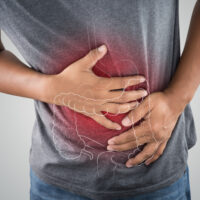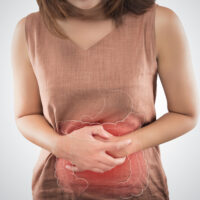Here’s what you should know about allergies and how to treat them
When a foreign substance enters the body, it may cause an allergy as a part of the immune system’s response to it. Such foreign substances are referred to as allergens and they can include everything from certain foods to pet dander.
The job of our immune system is to keep the body healthy and safeguard it from pathogens, germs, and any disease-causing organism.

Overview
Atopy can be defined as an individual’s propensity to develop allergic reactions. When our bodies are exposed to some foreign objects, there is an exaggerated response from the immune system. If an individual is non-allergic, the foreign substance will not cause any type of allergic reaction. But in case of an allergic individual, the body will think of the substance as a harmful allergen and the part of the immune system that is allergic will produce a response to it. Allergens usually encompass a diverse range of substances, some of which are:
- Dust mites
- Pollen
- Animal proteins
- Certain kinds of foods
- Medicines
- Mold
About 10 to 30 percent of the American population is prone to allergies and this number has been consistently rising; nasal allergies, in particular, are known to affect approximately 20 percent of America’s population.
Asthma, which is often triggered by the body’s reaction to certain substances, has affected more than 25 million people in the country, according to the Asthma and Allergy Foundation of America (AAFA). The total cost that asthma has on the society is $50 billion, including loss of work/school hours and medicine and hospitalization bills, every year.
Allergies caused by food affect around eight percent of children and five percent of adults in the country.
Causes
The immune system has its own defence mechanism that protects it from foreign, invading substances. It is responsible for identifying these substances and fighting them. These substances are known as antigens. As soon as the immune system identifies the presence of an antigen in the body, it starts producing antibodies to fight it. The antibodies then attach themselves to or merge with the antigen in order to kill it.
However, when a person is allergic, their body develops a special type of antibody, which is known as immunoglobulin E (IgE). This antibody is produced in response to an invasion by foreign substances that are usually harmless, such as certain foods, pollen, and the like. When IgE is produced in the body, it identifies the antigen and attacks it, thereby causing an allergic reaction.
Immunoglobulin E can be found in small quantities in all individuals. However, when a person is allergic, this antibody is produced in larger amounts. IgE production is also known to increase during parasitic infections.
Other than antibodies, T-cells found in the immune system can also be a part of the allergic responses to antigens. These antigens can include oily, plant-generated substances such as poison sumac, poison oak, and poison ivy, or certain metals and chemicals. The T-cells in the immune system identify these allergens when they come in contact with the skin and launch an allergic reaction. The response is usually inflammatory, such as a skin rash that can be itchy.
Allergies are often associated with sneezing or those irritating sniffles that are caused due to weather change. However, other than these, there are certain allergies that can pose an immediate threat to life. An example of this is anaphylaxis. It is a severe allergic reaction that is caused due to exposure to allergens including certain foods like fish and peanuts; it is also caused by bee stings, latex, and wasps, among many others. Anaphylaxis has a range of severe symptoms. Some of them are:
- Vomiting and nausea
- Narrowing down of airways
- Increase in heart rate
- Potential swelling of the mouth and tongue
Although the symptoms may not be severe in themselves, the condition that they can give rise to is. A case of anaphylaxis generally requires medical intervention. It is after looking at these symptoms and determining whether it was just sensitivity or a full-blown allergic reaction that the doctor can arrive at a conclusion. To avoid further complications, they might also prescribe ways to manage these symptoms.
The most effective way to prevent allergic reactions from occurring is to avoid contact with potential allergens. While this may not always be practical or possible, it is, however, highly advised to control and manage the symptoms that could lead to it. The key is to reduce contact with or avoid potential allergens altogether.
When it comes to food allergies, avoiding foods that you think you may be allergic to can go a long way. One way to do this is to adopt an elimination diet, which helps in knowing allergy triggers and thus, avoid such foods completely. Checking labels on food items and inquiring about ingredients while dining out are the little ways in which you can ensure that your allergens are being avoided.
Seasonal allergies, alternatively known as hay fever, are airborne and caused by pollen and mold. The best way to prevent these is by being cognizant of where these allergens might be present and combating and avoiding them accordingly. For example: if dust causes an allergic reaction, you can install air purifiers inside your home, get your air ducts cleaned regularly, and make sure that there is no dust accumulating in your house; if you are allergic to insect bites, you must avoid wearing any fragrance while stepping out and make sure that areas of your body such as feet are well-covered.
An allergy test can help identify and avoid certain allergens. The diagnosis of an allergy largely depends on the patient’s own experiences and lifestyle. The allergist might want to make a note of the same by discussing with you a few things listed below:
- Signs and symptoms experienced recently
- Allergy history
- Repeated occurrence of specific symptoms or triggers
While diagnosing food allergies, the doctor might require you to keep a journal of the kinds of foods you eat and whether you stopped eating some of those after suspecting some allergens.
In most cases, the specialist might conduct either a skin or blood test to diagnose an allergy. Although the results of the test may not always be completely accurate, they still help in identifying and weeding out potential allergens.
- Skin test: In this test, the skin is slightly pricked and exposed to an allergen sample. If this causes the pricked part to develop redness or swelling on the, then it means that an individual is allergic to that substance.
- Blood test: A radioallergosorbent (RAST) or ImmunoCAP test, or what is also known as specific IgE or sIgE test, is used to determine the presence of IgE antibodies in the bloodstream that may be attacking some allergens. Evidence of possible allergens is sought in the blood sample once it reaches a medical laboratory.
After these tests are done, it might still be unclear whether an allergy is the actual cause of a reaction. In this case, taking a few more tests might help you to infer what the true cause is.
Treatment options
There is a range of options that are available to treat allergies, the most common of them being over-the-counter and prescription drugs. In addition, allergy shots are also widely used as allergy treatments. Further, a few alterations in lifestyle and active avoidance of triggers also play a major role in treating an allergy. Let us discuss a few ways in which allergies can be treated and their risks mitigated:
- Allergen avoidance: Allergy triggers have a big part to play in the occurrence of an allergy. Doctors can identify these triggers and suggest ways in which you can avoid them. This is the simplest and most effective method to steer clear of allergies/allergic symptoms.
- Medications: Medications can be quite effective in providing relief from the symptoms of allergies and also strengthening the immune system. Many over-the-counter medications can be prescribed in this situation, and they include pills, eye-drops, sprays, and more.
- Allergy immunotherapy: In case the allergies are too severe and there is no relief by a few changes or medications, immunotherapy may do the trick. This form of treatment involves a series of injections that contain purified extracts of substances one may be allergic to. This is done in order to desensitize the immune system towards the allergens in question. Apart from this, immunotherapy is also conducted by using specific tablets that contain the allergens and placing them under a person’s tongue. In order to treat some pollen allergies, sublingual drugs may be given.
- Emergency epinephrine: Those with severe allergies and conditions such as anaphylaxis and asthma may be required to have epinephrine shots during times of emergency. Epinephrine shots come in various types, such as Auvi-Q, EpiPen, etc., which can greatly help in reducing the severity of the trigger.
Natural remedies
In addition to the above-mentioned treatments, there are also some natural remedies that can help in providing quick relief from allergic reactions. Let us have a look at some of them:
- Sinus congestion with symptoms of hay fever:
Saline nasal irrigation is often considered an effective way of natural treatment as it rinses out the sinus with salt and water. A neti pot or squeeze bottle can be used to flush out irritants or thick mucus from the nose. However, if not done correctly, it might lead to an infection. Hence, remaining cautious is important.
- Symptoms of household airborne allergy:
In order to combat symptoms from this category, it is important to frequently clean items such as bedding and soft toys to ensure that there is no exposure to dust mites and pet dander. Other methods include maintaining low humidity levels, regular vacuuming, and using hard flooring instead of carpeting.
- Mold allergy symptoms:
Ventilation fans and dehumidifiers can be used to reduce moisture in damp areas of bathrooms, kitchens, bedrooms, etc. All leaks inside and around the home should be fixed.
Even though allergies can be caused by various factors, some allergy triggers are more common than the others. In case there is a common allergy trigger, the allergy treatment has to be instant and simple. Here are some of the commonly known allergy triggers and ways to combat them:
- Dust mites: Allergies caused due to dust mites can be caused all year round as opposed to seasonal allergies caused by pollen. Dust mites are extremely tiny and cannot be seen with a naked eye. Some simple solutions include using dust mite covers over pillows, mattresses, and box-springs; washing sheets regularly in hot water; using hypoallergenic pillows; and minimizing usage of products such as carpets and stuffed animals.
- Animal dander and cockroaches: Flecks of skin shed by pets like dogs and cats and even birds are collectively known as dander and they can trigger an allergic reaction. The allergy is often not recognised instantly as it takes a couple of years to be developed. Some of its common symptoms are sneezing, congestion, and watery eyes. In this situation, it is advisable to avoid being in close contact with these animals, give them regular washes, and take medications like nasal steroids, antihistamines, and decongestants.
- Insect sting: An insect sting can have bigger complications than the pain it causes. Stings from organisms such as bees, fire ants, hornets, wasps, and many others can cause severe allergic reactions. Some of the symptoms of insect allergies include problems in breathing; swelling of the face, eyelids, ears, mouth, hands, and feet; feeling dizzy; and at times, even unconsciousness. In order to combat allergies of this kind, you can try to stay away from insects and keep an insecticide handy. You can also choose to take allergy shots after discussing it with your doctor.





